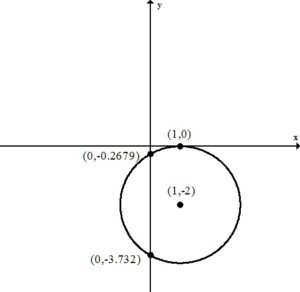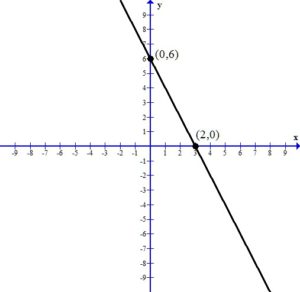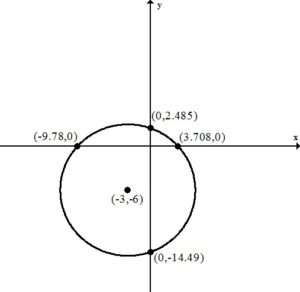An x-intercept is where the graph touches or crosses the x-axis.
A y-intercept is where the graph touches of crosses the y-axis.
To find an x-intercept: Let y=0 and solve for x.
To find an y-intercept: Let x=0 and solve for y.
Example: Find the intercepts of the circle for the given equation.

Solution:
To find an x-intercept, let y=0 and solve for x.










This equation has one x-intercept. 
To find a y-intercept, let x=0 and solve for y.











Approximately  and
and 
This equation has two y-intercepts.  and
and 

A tangent line to a circle may be defined as a line that intersects the circle in a single point.
This circle is tangent to the x-axis since it is touching the x-axis in a single point. The x-axis (y=0) is the tangent line for the point on the circle (1,0).
Example: Find the intercepts of the circle for the given equation.

Solution:
To find an x-intercept, let y=0 and solve for x.











Approximately  and
and 
This equation has two x-intercepts.  and
and 
To find a y-intercept, let x=0 and solve for y.










This equation has one y-intercept.  .
.

This circle is tangent to the y-axis since it is touching the y-axis in a single point. The y-axis (x=0) is the tangent line for the point on the circle (0,1).

 . Since every ordered pair on the x-axis has a y coordinate of zero we can let
. Since every ordered pair on the x-axis has a y coordinate of zero we can let  to find x-intercepts.
to find x-intercepts. . Since every ordered pair on the y-axis has a x coordinate of zero we can let
. Since every ordered pair on the y-axis has a x coordinate of zero we can let  to find y-intercepts.
to find y-intercepts.



















 and
and 
 and
and 












 and
and 
 and
and 









 .
.











 and
and 
 and
and 










 and
and 
 and
and 
